A personal computer (PC) is a computer whose original sales price, size, and capabilities make it useful for individuals, and which is intended to be operated directly by an end user, with no intervening computer operator.
Today a PC may be a desktop computer, a laptop computer or a tablet computer. The most common operating systems are Microsoft Windows, Mac OS X and Linux, while the most common microprocessors are x86 compatible CPUs. However, the term "PC" is often used only to refer to computers running Microsoft Windows. Software applications for personal computers include word processing, spreadsheets, Database, games, and a myriad of personal productivity and special-purpose software. Modern personal computers often have high-speed or dial-up connections to the Internet, allowing access to the World Wide Web and a wide range of other resources.
A PC may be a home computer, or may be found in an office, often connected to a local area network. The distinguishing characteristics are that the computer is primarily used, interactively, by one person at a time. This is in contrast to the batch processing or time-sharing models which allowed large expensive systems to be used by many people, usually at the same time, or large data processing systems which required a full-time staff to operate efficiently.
While early PC owners usually had to write their own programs to do anything useful with the machines, today's users have access to a wide range of commercial and free software which is easily installed.
History
-
The capabilities of the PC have changed greatly since the introduction of electronic computers. By the early 1970s, people in academic or research institutions had the opportunity for single-person use of a computer system in interactive mode for extended durations, although these systems would still have been too expensive to be owned by a single person. The introduction of the microprocessor, a single chip with all the circuitry that formerly occupied large cabinets, led to the proliferation of personal computers after about 1975. Early personal computers - generally called microcomputers - were sold often in kit form and in limited volumes, and were of interest mostly to hobbyists and technicians. By the late 1970s, mass-market pre-assembled computers allowed a wider range of people to use computers, focusing more on software applications and less on development of the processor hardware.
Throughout the 1970s and 1980s, home computers were developed for household use, offering personal productivity, programming and games. Somewhat larger and more expensive systems (although still low-cost compared with minicomputers and mainframes) were aimed for office and small business use. Workstations are characterized by high-performance processors and graphics displays, with large local disk storage, networking capability, and running under a multitasking operating system. Workstations are still used for tasks such as computer-aided design, drafting and modelling, computation-intensive scientific and engineering calculations, image processing, architectural modelling, and computer graphics for animation and motion picture visual effects.[1]
Eventually the market segments lost any technical distinction; business computers acquired color graphics capability and sound, and home computers and game systems users used the same computers and operating systems as office workers. Mass-market computers had graphics capabilities and memory comparable to dedicated workstations of a few years before. Even local area networking, originally a way to allow business computers to share expensive mass storage and peripherals, became a standard feature of the personal computers used at home.
Market
In 2001 125 million personal computers were shipped in comparison to 48 thousand in 1977. More than 500 million PCs were in use in 2002 and one billion personal computers had been sold worldwide since mid-1970s till this time. Of the latter figure, 75 percent were professional or work related, while the rest sold for personal or home use. About 81.5 percent of PCs shipped had been desktop computers, 16.4 percent laptops and 2.1 percent servers. United States had received 38.8 percent (394 million) of the computers shipped, Europe 25 percent and 11.7 percent had gone to Asia-Pacific region, the fastest-growing market as of 2002. The second billion was expected to be sold by 2008.[2] Almost half of all the households in Western Europe had a personal computer and a computer could be found in 40 percent of homes in United Kingdom, compared with only 13 percent in 1985.[3]
As of June 2008, the number of personal computers worldwide in use hit one billion, while another billion is expected to be reached by 2014. Mature markets like the United States, Western Europe and Japan accounted for 58 percent of the worldwide installed PCs. The emerging markets were expected to double their installed PCs by 2013 and to take 70 percent of the second billion PCs. About 180 million PCs (16 percent of the existing installed base) were expected to be replaced and 35 million to be dumped into landfill in 2008. The whole installed base grew 12 percent annually.[4][5]
Types
Desktop computer
-
A desktop computer is an independent personal computer (PC), as opposed to smaller forms of PCs, such as a mobile laptop. Prior to the wide spread of PCs a computer that could fit on a desk was considered remarkably small. Today the phrase usually indicates a particular style of computer case. Desktop computers come in a variety of styles ranging from large vertical tower cases to small form factor models that can be tucked behind an LCD monitor. In this sense, the term 'desktop' refers specifically to a horizontally-oriented case, usually intended to have the display screen placed on top to save space on the desk top. Most modern desktop computers have separate screens and keyboards.
Laptop
-
A laptop computer or simply laptop, also called a notebook computer or sometimes a notebook, is a small personal computer designed for mobility. Usually all of the interface hardware needed to operate the laptop, such as parallel and serial ports, graphics card, sound channel, etc., are built in to a single unit. Most laptops contain batteries to facilitate operation without a readily available electrical outlet. In the interest of saving power, weight and space, they usually share RAM with the video channel, slowing their performance compared to an equivalent desktop machine.
One main drawback of the laptop is that, due to the size and configuration of components, relatively little can be done to upgrade the overall computer from its original design. Some devices can be attached externally through ports (including via USB), however internal upgrades are not recommended or in some cases impossible, making the desktop PC more modular.
Tablet PC
-
A tablet PC is a notebook or slate-shaped mobile computer, first introduced by Pen Computing in the early 90s with their PenGo Tablet Computer and popularized by Microsoft. Its touchscreen or graphics tablet/screen hybrid technology allows the user to operate the computer with a stylus or digital pen, or a fingertip, instead of a keyboard or mouse. The form factor offers a more mobile way to interact with a computer. Tablet PCs are often used where normal notebooks are impractical or unwieldy, or do not provide the needed functionality.
Ultra-Mobile PC
-
The ultra-mobile PC (UMPC) is a specification for a small form factor tablet PC. It was developed as a joint development exercise by Microsoft, Intel, and Samsung, among others. Current UMPCs typically feature the Windows XP Tablet PC Edition 2005, Windows Vista Home Premium Edition, or Linux operating system and low-voltage Intel Pentium or VIA C7-M processors in the 1 GHz range.
Home theater PC
-
A home theater PC (HTPC) is a convergence device that combines the functions of a personal computer and a digital video recorder. It is connected to a television or a television-sized computer display and is often used as a digital photo, music, video player, TV receiver and digital video recorder. Home theater PCs are also referred to as media center systems or media servers. The general goal in a HTPC is usually to combine many or all components of a home theater setup into one box. They can be purchased pre-configured with the required hardware and software needed to add television programming to the PC, or can be cobbled together out of discrete components as is commonly done with Windows Media Center, GB-PVR, SageTV, Famulent or LinuxMCE.
Pocket PC
-
A pocket PC is a hardware specification for a handheld-sized computer (personal digital assistant) that runs the Microsoft Windows Mobile operating system. It may have the capability to run an alternative operating system like NetBSD or Linux. It has many of the capabilities of modern desktop PCs.
Currently there are thousands of applications for handhelds adhering to the Microsoft Pocket PC specification, many of which are freeware. Some of these devices also include mobile phone features. Microsoft compliant Pocket PCs can also be used with many other add-ons like GPS receivers, barcode readers, RFID readers, and cameras. In 2007, with the advent of Windows Mobile 6, Microsoft dropped the name Pocket PC in favor of a new naming scheme. Devices without an integrated phone are called Windows Mobile Classic instead of Pocket PC. Devices with an integrated phone and a touch screen are called Windows Mobile Professional.[6]
Hardware
-
A typical hardware setup of a desktop computer consists of:
These components can usually be put together with little knowledge to build a computer. The motherboard is a main part of a computer that connects all devices together. The memory card(s), graphics card and processor are mounted directly onto the motherboard (the processor in a socket and the memory and graphics cards in expansion slots). The mass storage is connected to it with cables and can be installed in the computer case or in a separate case. This is the same for the keyboard and mouse, except that they are external and connect to the I/O panel on the back of the computer. The monitor is also connected to the I/O panel, either through an onboard port on the motherboard, or a port on the graphics card.
Several functions (implemented by chipsets) can be integrated into the motherboard, typically USB and network, but also graphics and sound. Even if these are present, a separate card can be added if what is available isn't sufficient. The graphics and sound card can have a break out box to keep the analog parts away from the electromagnetic radiation inside the computer case. For really large amounts of data, a tape drive can be used or (extra) hard disks can be put together in an external case.
The hardware capabilities of personal computers can sometimes be extended by the addition of expansion cards connected via an expansion bus. Some standard peripheral buses often used for adding expansion cards in personal computers as of 2005 are PCI, AGP (a high-speed PCI bus dedicated to graphics adapters), and PCI Express. Most personal computers as of 2005 have multiple physical PCI expansion slots. Many also include an AGP bus and expansion slot or a PCI Express bus and one or more expansion slots, but few PCs contain both buses.
Computer case
-
Main article: Computer case
A computer case is the enclosure that contains the main components of a computer. Cases are usually constructed from steel, aluminium, or plastic, although other materials such as wood, plexiglas or fans[7] have also been used in case designs. Cases can come in many different sizes, or form factors. The size and shape of a computer case is usually determined by the form factor of the motherboard that it is designed to accommodate, since this is the largest and most central component of most computers. Consequently, personal computer form factors typically specify only the internal dimensions and layout of the case. Form factors for rack-mounted and blade servers may include precise external dimensions as well, since these cases must themselves fit in specific enclosures.
Currently, the most popular form factor for desktop computers is ATX, although microATX and small form factors have become very popular for a variety of uses. Companies like Shuttle Inc. and AOpen have popularized small cases, for which FlexATX is the most common motherboard size. Apple Computer has also produced the Mac Mini computer, which is similar in size to a standard CD-ROM drive.
Motherboard
-
Main article: Motherboard
The motherboard, also referred to as systemboard or mainboard, is the primary circuit board within a personal computer. Many other components connect directly or indirectly to the motherboard. Motherboards usually contain one or more CPUs, supporting circuitry - usually integrated circuits (ICs) - providing the interface between the CPU memory and input/output peripheral circuits, main memory, and facilities for initial setup of the computer immediately after power-on (often called boot firmware or, in IBM PC compatible computers, a BIOS). In many portable and embedded personal computers, the motherboard houses nearly all of the PC's core components. Often a motherboard will also contain one or more peripheral buses and physical connectors for expansion purposes. Sometimes a secondary daughter board is connected to the motherboard to provide further expandability or to satisfy space constraints.
Central processing unit
-
The central processing unit, or CPU, is that part of a computer which executes software program instructions. In older computers this circuitry was formerly on several printed circuit boards, but in PCs is a single integrated circuit. Nearly all PCs contain a type of CPU known as a microprocessor. The microprocessor often plugs into the motherboard using one of many different types of sockets. IBM PC compatible computers use an x86-compatible processor, usually made by Intel, AMD, VIA Technologies or Transmeta. Apple Macintosh computers were initially built with the Motorola 680x0 family of processors, then switched to the PowerPC series (a RISC architecture jointly developed by Apple Computer, IBM and Motorola), but as of 2006, Apple has switched again, this time to x86 compatible processors. Modern CPUs are equipped with a fan attached via heat sink.
Main memory
-
A PC's main memory is fast storage that is directly accessible by the CPU, and is used to store the currently executing program and immediately needed data. PCs use semiconductor random access memory (RAM) of various kinds such as DRAM or SRAM as their primary storage. Which exact kind depends on cost/performance issues at any particular time. Main memory is much faster than mass storage devices like hard disks or optical discs, but is usually volatile, meaning it does not retain its contents (instructions or data) in the absence of power, and is much more expensive for a given capacity than is most mass storage. Main memory is generally not suitable for long-term or archival data storage.
Hard disk
-
Mass storage devices store programs and data even when the power is off; they do require power to perform read and write functions during usage. Although semiconductor flash memory has dropped in cost, the prevailing form of mass storage in personal computers is still the electromechanical hard disk.
The disk drives use a sealed head/disk assembly (HDA) which was first introduced by IBM's "Winchester" disk system. The use of a sealed assembly allowed the use of positive air pressure to drive out particles from the surface of the disk, which improves reliability.
If the mass storage controller provides for expandability, a PC may also be upgraded by the addition of extra hard disk or optical disc drives. For example, DVD-ROMs, CD-ROMs, and various optical disc recorders may all be added by the user to certain PCs. Standard internal storage device interfaces are ATA, Serial ATA, SCSI, and CF+ type II in 2005.
Video card
-
The video card - otherwise called a graphics card, graphics adapter or video adapter - processes and renders the graphics output from the computer to the computer display, also called the visual display unit (VDU), and is an essential part of the modern computer. On older models, and today on budget models, graphics circuitry tended to be integrated with the motherboard but, for modern flexible machines, they are supplied in PCI, AGP, or PCI Express format.
When the IBM PC was introduced, many existing personal computers used text-only display adapters and had no graphics capability.
Visual display unit
-
A visual display unit (also called monitor) is a piece of electrical equipment which displays viewable images generated by a computer without producing a permanent record. The word "monitor" is used in other contexts; in particular in television broadcasting, where a television picture is displayed to a high standard. A computer display device is usually either a cathode ray tube or some form of flat panel such as a TFT LCD. The monitor comprises the display device, circuitry to generate a picture from electronic signals sent by the computer, and an enclosure or case. Within the computer, either as an integral part or a plugged-in interface, there is circuitry to convert internal data to a format compatible with a monitor.
Other components
- Mass storage
-
- The operating system (e.g.: Microsoft Windows, Mac OS, Linux or many others) can be located on either of these, but typically it is on one of the hard disks. A Live CD is also possible, but it is very slow and is usually used for installation of the OS, demonstrations, or problem solving.
- Computer communications
- Common peripherals and adapter cards
Software
-
Computer software is a general term used to describe a collection of computer programs, procedures and documentation that perform some tasks on a computer system.[8] The term includes application software such as word processors which perform productive tasks for users, system software such as operating systems, which interface with hardware to provide the necessary services for application software, and middleware which controls and co-ordinates distributed systems.
Software applications for word processing, Internet browsing, Internet faxing, e-mail and other digital messaging, multimedia playback, computer game play and computer programming are common. The user of a modern personal computer may have significant knowledge of the operating environment and application programs, but is not necessarily interested in programming nor even able to write programs for the computer. Therefore, most software written primarily for personal computers tends to be designed with simplicity of use, or "user-friendliness" in mind. However, the software industry continuously provide a wide range of new products for use in personal computers, targeted at both the expert and the non-expert user.
Operating system
-
An operating system (OS) manages computer resources and provides programmers with an interface used to access those resources. An operating system processes system data and user input, and responds by allocating and managing tasks and internal system resources as a service to users and programs of the system. An operating system performs basic tasks such as controlling and allocating memory, prioritizing system requests, controlling input and output devices, facilitating computer networking and managing files.
Common contemporary desktop OSes are Linux, Mac OS X, Microsoft Windows and Solaris. Mac, Linux, and Windows all have server and personal variants. With the exception of Microsoft Windows, the designs of each of the aforementioned OSs were inspired by, or directly inherited from, the Unix operating system. Unix was developed at Bell Labs beginning in the late 1960s and spawned the development of numerous free and proprietary operating systems.
Palm OS, Windows Mobile, Familiar Linux, The Ångström Distribution and iPhone OS can be found on mobile devices.
Microsoft Windows
-
Microsoft Windows is the name of several families of software operating systems by Microsoft. Microsoft first introduced an operating environment named Windows in November 1985 as an add-on to MS-DOS in response to the growing interest in graphical user interfaces (GUIs).[9] [10] The most recent client version of Windows is Windows Vista. The current server version of Windows is Windows Server 2008.
Mac OS X
-
Mac OS X is a line of graphical operating systems developed, marketed, and sold by Apple Inc., the latest of which is pre-loaded on all currently shipping Macintosh computers. Mac OS X is the successor to the original Mac OS, which had been Apple's primary operating system since 1984. Unlike its predecessors, Mac OS X is a Unix-based operating system[11] built on technology developed at NeXT from the second half of the 1980s until early 1997, when Apple purchased the company.
The server edition, Mac OS X Server, is architecturally very similar to its desktop counterpart but usually runs on Apple's line of Macintosh server hardware. It includes workgroup management and administration software tools that provide simplified access to key network services, including a mail transfer agent, a Samba server, an LDAP server, a domain name server, and others.
Linux
-
Linux is a Unix-like computer operating system. Linux is one of the most prominent examples of free software and open source development: typically all underlying source code can be freely modified, used, and redistributed by anyone.[12] The name "Linux" comes from the Linux kernel, started in 1991 by Linus Torvalds. The system's utilities and libraries usually come from the GNU operating system, announced in 1983 by Richard Stallman. The GNU contribution is the basis for the alternative name GNU/Linux.[13]
Predominantly known for its use in servers, Linux is supported by corporations such as Dell, Hewlett-Packard, IBM, Novell, Oracle Corporation, Red Hat, and Sun Microsystems. It is used as an operating system for a wide variety of computer hardware, including desktop computers, supercomputers,[14] video game systems, such as the PlayStation 3, several arcade games, and embedded devices such as mobile phones, routers, and stage lighting systems.
Applications
Application software employs the capabilities of a computer directly and thoroughly to a task that the user wishes to perform. This should be contrasted with system software which is involved in integrating a computer's various capabilities, but typically does not directly apply them in the performance of tasks that benefit the user. In this context the term application refers to both the application software and its implementation. A simple, if imperfect analogy in the world of hardware would be the relationship of an electric light bulb (an application) to an electric power generation plant (a system). The power plant merely generates electricity, not itself of any real use until harnessed to an application like the electric light that performs a service that benefits the user.
Typical examples of software applications are word processors, spreadsheets, and media players. Multiple applications bundled together as a package are sometimes referred to as an application suite. Microsoft Office and OpenOffice.org, which bundle together a word processor, a spreadsheet, and several other discrete applications, are typical examples. The separate applications in a suite usually have a user interface that has some commonality making it easier for the user to learn and use each application. And often they may have some capability to interact with each other in ways beneficial to the user. For example, a spreadsheet might be able to be embedded in a word processor document even though it had been created in the separate spreadsheet application.
User-written software tailors systems to meet the user's specific needs. User-written software include spreadsheet templates, word processor macros, scientific simulations, graphics and animation scripts. Even email filters are a kind of user software. Users create this software themselves and often overlook how important it is.
Lifetime
Most personal computers are standardized to the point that purchased software is expected to run with little or no customization for the particular computer. Many PCs are also user-upgradeable, especially desktop and workstation class computers. Devices such as main memory, mass storage, even the motherboard and central processing unit may be easily replaced by an end user. This upgradeability is, however, not indefinite due to rapid changes in the personal computer industry. A PC that was considered top-of-the-line five or six years prior may be impractical to upgrade due to changes in industry standards. Such a computer usually must be totally replaced once it is no longer suitable for its purpose. This upgrade and replacement cycle is partially related to new releases of the primary mass-market operating system, which tends to drive the acquisition of new hardware and render obsolete previously serviceable hardware (planned obsolescence).




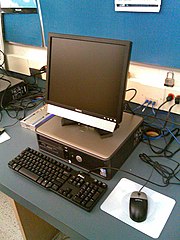


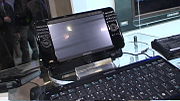
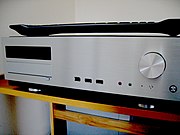
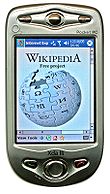
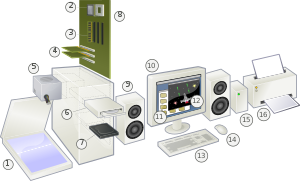
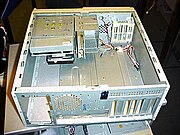

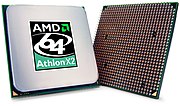

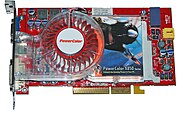
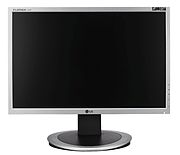
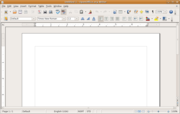

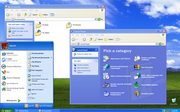
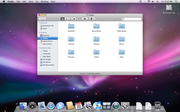
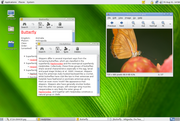

 temperature influence on sound velocity
temperature influence on sound velocity